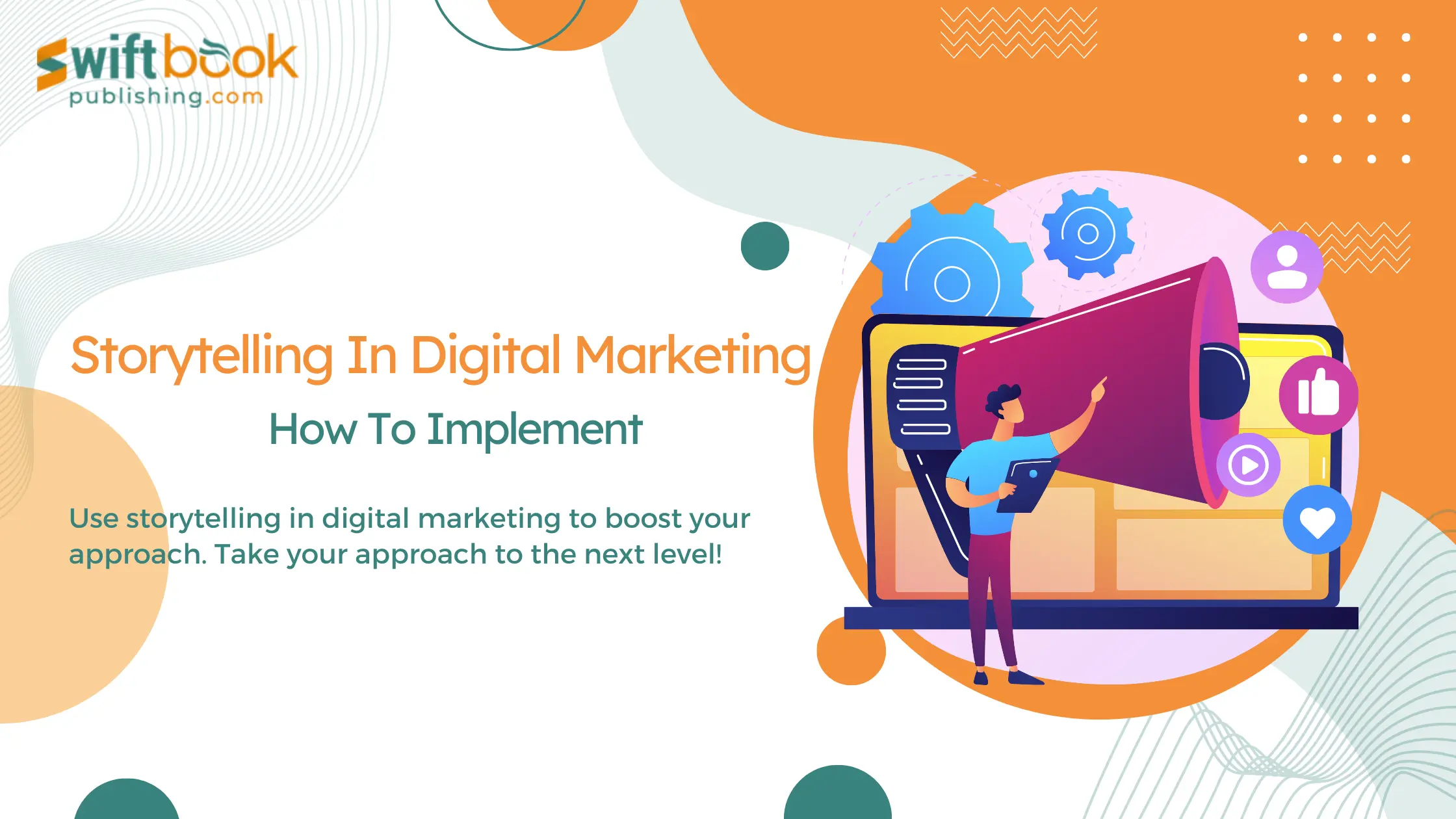Have you ever heard about Red Bull Mission Stratos? It was a marketing campaign dubbed a mission by Red Bull in which they broke the world record for the highest skydive from the Stratosphere. Felix Baumgartner, who took it upon himself to be the person to break the record, went in a helium balloon to the edge of the stratosphere and jumped 127852 feet, plummeting towards earth. While falling, he reached speeds up to Mach 1.2, where he also became the first person to break the sound barrier without any aircraft or vehicle. After 4 minutes and 19 seconds, Felix safely landed on Earth.
The mission was a huge success, with RedBull garnering millions of views around the world, showcasing itself as a corporation that not only serves power drinks but also wants to break boundaries and go above and beyond.
This is just one example of how a business implements storytelling in digital marketing. If you also want to learn what it takes to reach out to millions through storytelling, then you’re in the right place. The following guide will provide you with how you can implement it on your own.
Why is Storytelling Important?
We are pretty sure that you skipped the entire section on Digital Marketing above…
That was our intention.
This is why storytelling is important. Anyone would rather hear a story with all sorts of twists and turns and thrills than hear a boring description of what digital marketing is.
So let’s see the role of storytelling in effective digital marketing:
1. Humanizing the Brand
Storytelling in digital marketing humanizes the brand by presenting a narrative that resonates with the audience. Sharing relatable stories fosters a sense of connection, making the brand more approachable and relatable.
2. Eliciting Emotion
Emotional connections drive consumer behavior. Storytelling has the power to evoke emotions, creating a memorable and impactful experience for the audience. Emotional resonance enhances brand recall and loyalty.
3. Building Brand Identity
Through storytelling, brands can articulate their values, mission, and unique selling propositions. This helps in establishing a distinct brand identity, allowing consumers to understand what the brand stands for and why it matters.
4. Engaging and Retaining Attention
Stories captivate attention more effectively than straightforward marketing messages. In the fast-paced digital landscape, storytelling provides a way to engage and retain the audience’s attention, increasing the likelihood of message retention.
5. Creating a Narrative Arc
Storytelling allows brands to structure their messaging with a narrative arc. This involves introducing a problem or challenge, presenting the brand as the solution, and culminating in a resolution. This structured approach keeps the audience engaged from start to finish.
6. Encouraging Consumer Participation
Compelling stories invite audience participation. Whether through comments, sharing, or interactive elements, storytelling encourages consumers to actively engage with the brand’s content, fostering a sense of community.
7. Clarifying Complex Concepts
For brands offering intricate products or services, storytelling simplifies complex concepts. Narratives provide a context that makes it easier for the audience to comprehend the value and utility of what the brand offers.
8. Enhancing Content Shareability
Stories are inherently shareable. When audiences resonate with a narrative, they are more likely to share it with their networks. This organic sharing amplifies the reach of the brand’s message, potentially reaching new audiences.
9. Differentiating in a Saturated Market
In a crowded digital landscape, storytelling serves as a powerful tool for differentiation. A unique and compelling story sets a brand apart from competitors, helping it stand out in the minds of consumers.
10. Improving Message Retention
Humans are wired to remember stories better than isolated facts. By embedding key messages within a narrative, brands enhance message retention. Consumers are more likely to remember and recall the brand’s values and offerings.
How to Include Storytelling in Digital Marketing
1. Know Your Audience
Understanding your audience is the foundational step in effective storytelling. Conduct thorough market research to grasp your audience’s interests, challenges, and aspirations. This knowledge forms the basis for tailoring your narrative to resonate with their experiences, making it relatable and compelling. By aligning your story with their needs, you can establish a stronger connection that engages and retains their attention.
2. Define Your Brand Story
Establishing a cohesive brand narrative is essential for building a lasting impression. Clearly articulate your brand’s journey, values, and unique aspects that distinguish it from competitors. This narrative serves as the backbone of your marketing efforts, providing a consistent and recognizable identity that resonates with your target audience.
3. Choose the Right Platforms
Selecting the appropriate digital platforms is crucial for effective storytelling. Different platforms cater to diverse audience preferences. Social media channels, blogs, and video content offer distinct advantages. Tailor your approach to suit each platform’s strengths, ensuring your narrative is delivered in a format that aligns with your brand and engages your audience effectively.
4. Craft Compelling Visuals
Visual elements enhance the impact of storytelling. Utilize high-quality images, infographics, and videos to complement your narrative. Visual content not only captures attention faster but also adds a layer of emotional impact to your story. Striking visuals can reinforce key messages and contribute to a more memorable brand experience.
5. Establish a Consistent Tone
Maintaining a consistent tone is vital for building a recognizable brand voice. Whether your tone is lighthearted and humorous or serious and inspirational, consistency helps in creating a cohesive brand image. A unified tone across various communication channels contributes to a more cohesive and trustworthy brand identity.
6. Engage Through Customer Stories
Customer testimonials and success stories add authenticity and trust to your narrative. Incorporate real-life experiences into your storytelling to showcase the tangible impact of your products or services. Highlighting customer stories humanizes your brand, fostering a sense of community and strengthening the emotional connection with your audience.
7. Create a Story Arc
Structuring your storytelling with a compelling arc ensures sustained engagement. Follow a narrative structure that includes an introduction, rising action, climax, falling action, and resolution. This approach captivates your audience, keeping them invested in your story from the beginning to the end.
8. Evoke Emotions
Emotional resonance is the key to memorable storytelling. Craft narratives that tap into universal emotions such as joy, empathy, or inspiration. By evoking emotions, your storytelling creates a profound connection with your audience, leaving a lasting impression and reinforcing brand recall.
9. Leverage User-Generated Content
Encourage your audience to contribute to your narrative through user-generated content. Showcase their experiences, testimonials, and creative expressions. This not only adds diversity to your storytelling but also strengthens the sense of community around your brand, turning your audience into active participants.
10. Analyze and Adapt
Continuous analysis of your storytelling efforts is essential for refinement. Monitor engagement metrics, gather audience feedback, and track conversion rates through analytics. Use this data to adapt your storytelling strategy, ensuring it aligns with the evolving needs and preferences of your audience. This iterative approach allows you to optimize your narrative for maximum impact over time.
Conclusion
The idea, at the end of the day, is to make your marketing strategy more human, more personalized, and more meaningful. Psychologically speaking, the target audience tends to relate more to marketing tactics that are more grounded in reality and easier to relate to and the only way to achieve that is by following these ten fundamentals of storytelling.












